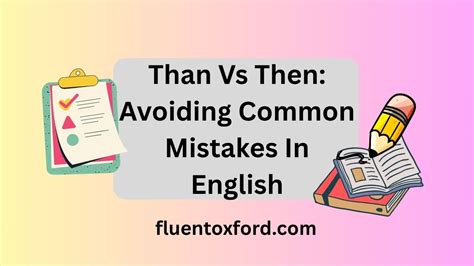The art of clear writing is a skill that can be mastered with practice, patience, and a keen eye for detail. One of the most common pitfalls that writers face is the “and then” mistake, where sentences are constructed in a way that sounds like a laundry list of events rather than a cohesive narrative. In this article, we will explore the ways to avoid this mistake and provide clear writing tips to help you improve your writing skills.
To start with, let’s examine the nature of the “and then” mistake. This type of construction often occurs when writers are trying to convey a sequence of events or actions, but end up sounding like they are reading from a checklist. For example: “I woke up, and then I got dressed, and then I had breakfast, and then I went to work.” While this sentence is grammatically correct, it sounds clunky and lacks flow.
So, how can you avoid this mistake? One technique is to use transitional words and phrases to connect your ideas. Instead of using “and then” repeatedly, try using words like “next,” “after that,” “meanwhile,” or “subsequently.” These words help to create a sense of continuity and flow, making your writing sound more natural and engaging.
Another approach is to use subordinating conjunctions to introduce dependent clauses. For example: “After I woke up, I got dressed and had breakfast before heading to work.” This sentence uses the subordinating conjunction “after” to introduce a dependent clause, creating a more complex and interesting sentence structure.
In addition to using transitional words and phrases, it’s also important to vary your sentence structure. A mix of short and long sentences can create a sense of rhythm and keep the reader engaged. Try to avoid starting multiple sentences with the same word or phrase, as this can create a sense of monotony.
One of the key factors in clear writing is to show, not tell. Instead of telling the reader what happened, try to recreate the scene in their minds. Use descriptive language and sensory details to bring your writing to life.
Now, let’s take a closer look at some specific writing tips that can help you avoid the “and then” mistake:
- Use active voice: Active voice makes your writing more engaging and easier to read. Instead of saying “the ball was thrown by John,” say “John threw the ball.”
- Vary sentence length: A mix of short and long sentences creates a sense of rhythm and keeps the reader engaged.
- Use descriptive language: Use sensory details to bring your writing to life. Instead of saying “the room was nice,” say “the room was filled with the sweet scent of fresh flowers and the warm glow of candlelight.”
- Show, not tell: Instead of telling the reader what happened, try to recreate the scene in their minds.
- Use transitional words and phrases: Words like “next,” “after that,” “meanwhile,” and “subsequently” help to create a sense of continuity and flow.
In conclusion, avoiding the “and then” mistake requires a combination of techniques, including using transitional words and phrases, varying sentence structure, and showing rather than telling. By following these clear writing tips, you can improve your writing skills and create engaging, cohesive narratives that capture your reader’s attention.
What is the "and then" mistake in writing?
+The "and then" mistake occurs when writers use the phrase "and then" repeatedly to connect a sequence of events or actions, resulting in a sentence that sounds like a laundry list rather than a cohesive narrative.
How can I avoid the "and then" mistake in my writing?
+You can avoid the "and then" mistake by using transitional words and phrases, varying sentence structure, and showing rather than telling. Try using words like "next," "after that," "meanwhile," and "subsequently" to connect your ideas, and use descriptive language to bring your writing to life.
What are some clear writing tips that can help me improve my writing skills?
+Some clear writing tips include using active voice, varying sentence length, using descriptive language, showing rather than telling, and using transitional words and phrases. By following these tips, you can create engaging, cohesive narratives that capture your reader's attention.
By incorporating these tips into your writing practice, you can take your writing to the next level and create clear, engaging narratives that resonate with your readers. Remember, the key to clear writing is to show, not tell, and to use language that is descriptive, concise, and easy to understand. With practice and patience, you can master the art of clear writing and become a more effective communicator.



